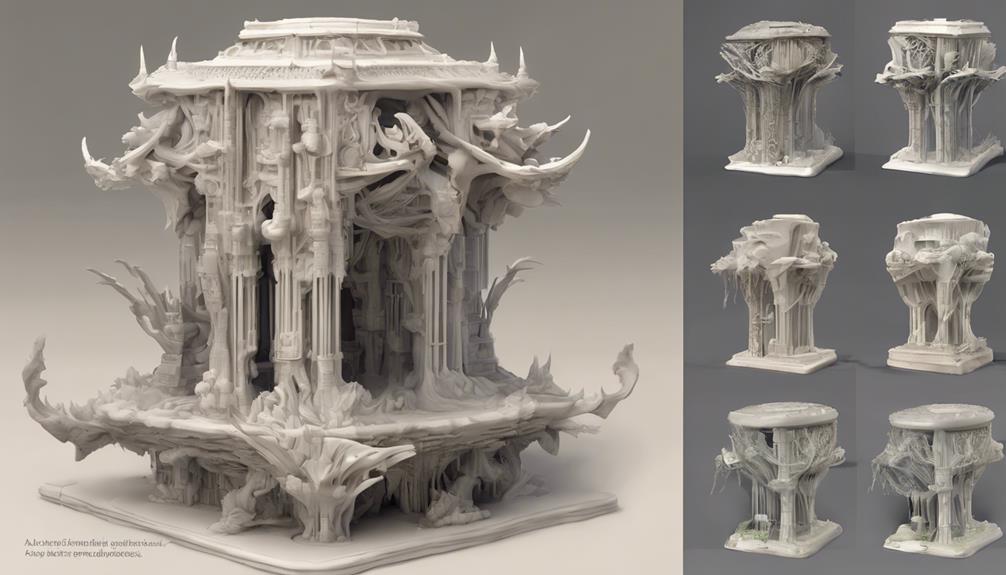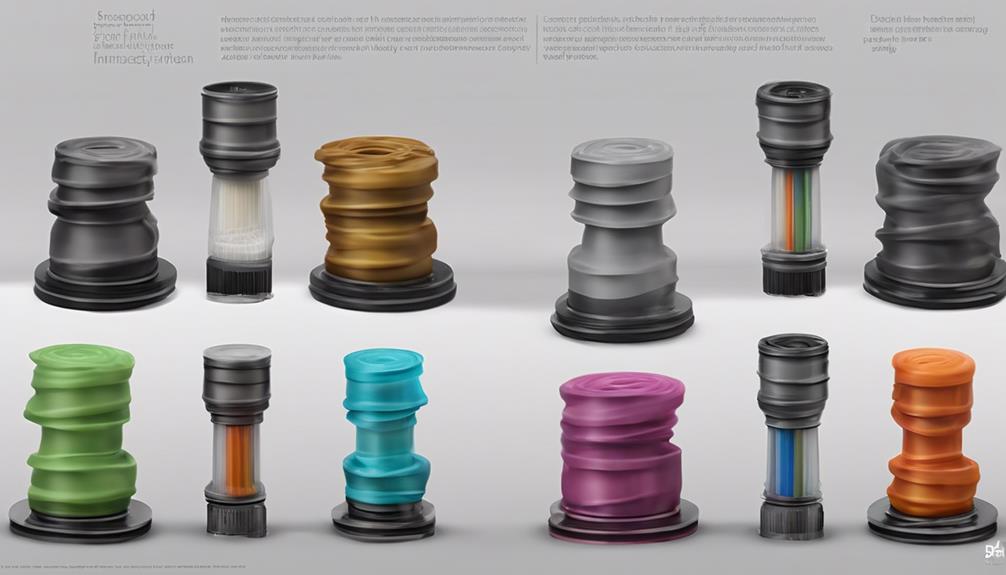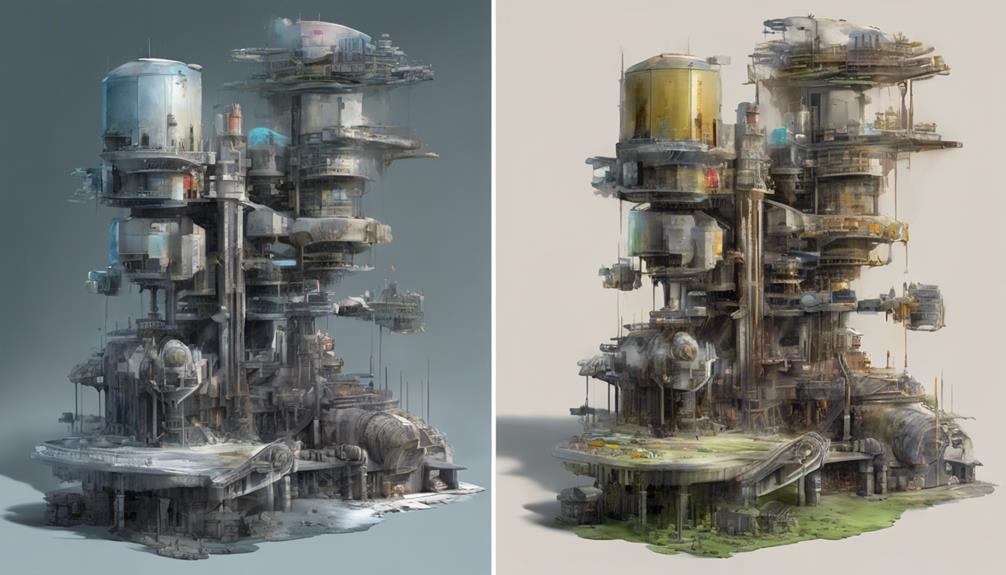As you journey into the domain of miniature printing, the quest for the ideal technology choice becomes paramount. Imagine a world where every intricate detail is flawlessly captured in your prints, where precision reigns supreme. You stand at the crossroads, pondering which path to take—SLA or FDM? The decision holds the key to opening up a world of possibilities, where your creations will come to life with unmatched clarity and finesse. Curious to explore the nuances that define the perfect technology for your miniature printing endeavors?
Print Quality and Precision Comparison

When choosing between FDM and SLA printers for miniature printing, consider the superior print quality and precision offered by SLA due to its finer details and smoother surfaces achieved through curing liquid resin with a laser.
SLA printers excel in producing intricate designs with accuracy and sharpness, thanks to their ability to create layers as thin as 0.025mm. The precision of SLA technology translates into stunning miniature models that capture every intricate feature with clarity.
Compared to FDM printers, SLA's higher resolution allows for finer details and more delicate structures, making it the preferred choice for those seeking exceptional quality in their miniature prints. So, if you prioritize exceptional detail and precision in your miniatures, SLA printers are the way to go.
Miniature Printing With FDM Tips
To enhance the quality of your FDM miniature prints, consider adjusting settings like speed and layer height for best results. Here are three tips to help you achieve better miniature prints:
- Fine-tune Speed: Slowing down the printing speed can improve the accuracy and details in your miniatures.
- Optimize Layer Height: Choosing a smaller layer height can enhance the overall quality and intricacy of your prints.
- Use a Smaller Nozzle: Installing a smaller diameter nozzle can help create finer details and sharper features on your miniatures.
Filament Selection Impact on Miniatures

Choosing the appropriate filament greatly impacts the quality and characteristics of miniature prints. The type of filament selected can influence details, durability, and even post-processing methods. Below is a comparison table outlining the key characteristics of commonly used filaments for miniature printing:
| Filament Type | Characteristics | Best For |
|---|---|---|
| PLA | Easy to use, minimal warping, wide color selection | General miniature printing |
| ABS | Higher detail, strength, post-print processing may be needed | Detailed miniatures with expertise |
| PETG | Durable, flexible, impact-resistant | Miniatures requiring toughness |
| TPU | Flexible, rubber-like, shock-absorbent | Miniatures needing flexibility |
| Nylon | Tough, abrasion-resistant, high friction coefficient | Miniatures with high wear and tear |
Consider these filament options carefully to achieve the desired results in your miniature prints.
Terrain Printing Challenges and Solutions
For terrain printing enthusiasts, overcoming challenges and finding effective solutions is essential for achieving realistic landscapes in miniature form. When it comes to terrain printing, here are some common challenges and solutions worth exploring:
- Printing Large-Scale Terrains: Breaking down large terrains into smaller sections for printing can help manage the printing process more efficiently and reduce the risk of failures due to long print times.
- Support Structures: Utilizing custom support structures or tree-like supports can help maintain the integrity of intricate terrain features during printing and prevent deformations.
- Finishing Techniques: Employing techniques such as sanding, painting, and adding realistic textures can enhance the appearance of printed terrains, bringing them to life in stunning detail.
Cost Analysis and Recommendations

Considering the affordability and quality factors, selecting the right printing technology for miniatures involves a thorough cost analysis and informed recommendations.
When analyzing costs, it's essential to factor in not only the initial printer purchase price but also ongoing expenses like filament or resin. Resin printers generally have higher upfront costs and material expenses compared to FDM printers.
For a cost-effective yet quality option, FDM printers like the Ender 3 are recommended. They offer versatility and affordability for miniature printing.
While SLA printers excel in detailed miniatures, the broader range of printable objects and lower costs make FDM a solid choice for many enthusiasts.
Ensuring a balance between quality and budget will lead to a satisfying miniature printing experience.
Frequently Asked Questions
Can FDM Printers Achieve the Same Level of Detail as SLA Printers for Miniatures?
Yes, FDM printers can achieve detailed miniatures like SLA printers. Adjust settings and nozzle size for finer prints. Longer print times may be needed for intricate details. Post-processing can further enhance FDM miniature quality.
How Can Layer Height Impact the Quality of Miniature Prints on FDM Machines?
Like a sculptor chiseling marble, adjusting layer height on FDM machines impacts miniature quality. Lower heights enhance details but increase print time. Fine-tune this setting, akin to a virtuoso perfecting a melody, for exquisite miniatures.
What Post-Processing Techniques Can Enhance FDM Miniature Quality?
To enhance FDM miniature quality, consider sanding rough surfaces, applying filler primer for smoothness, and using acrylic paints for detail. These post-processing techniques can elevate your prints, bringing out the best in your miniatures.
Are There Specific Filaments Recommended for Printing Terrain on FDM Printers?
When printing terrain on FDM printers, PLA is your go-to filament for its ease of use and compatibility. ABS offers higher detail but requires expertise. Remember, the right filament choice impacts the quality of your terrains.
What Are the Long-Term Maintenance Costs Associated With SLA Printers Compared to FDM Printers?
When comparing long-term maintenance costs of SLA and FDM printers, consider that SLA may have higher upkeep expenses due to resin costs, replacement parts, and maintenance requirements. FDM printers generally offer more cost-effective maintenance solutions over time.
Conclusion
As you weigh the options for miniature printing technology, remember the balance between precision and cost. While SLA printers offer unparalleled detail, FDM printers can be optimized for quality with the right settings.
Consider the impact of filament choice on your prints and be prepared to tackle terrain challenges. By carefully evaluating these factors, you can reveal the perfect technology choice for your miniature printing projects.
Choose wisely and watch your creations come to life in stunning detail.